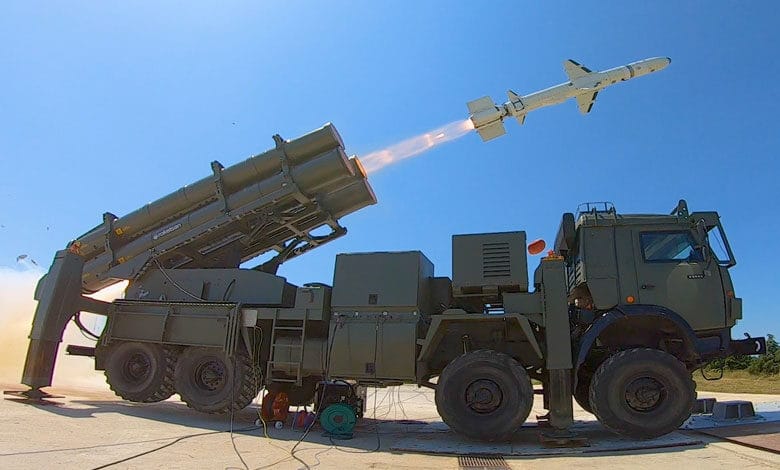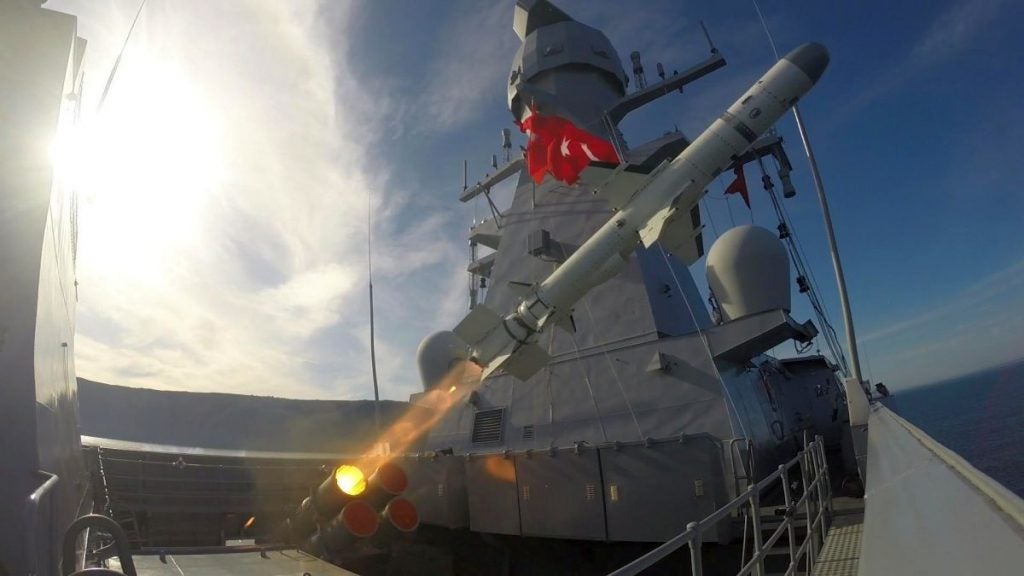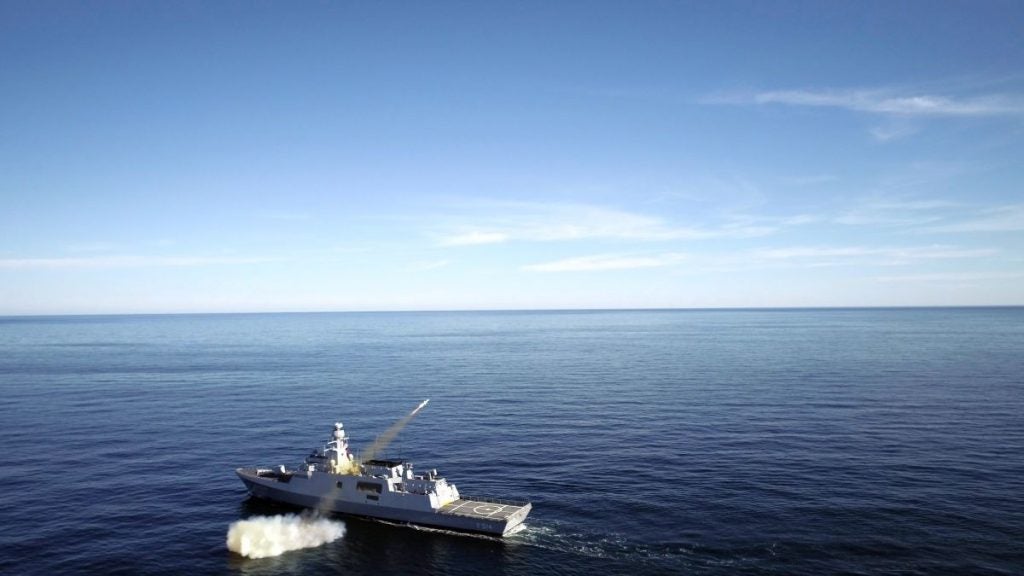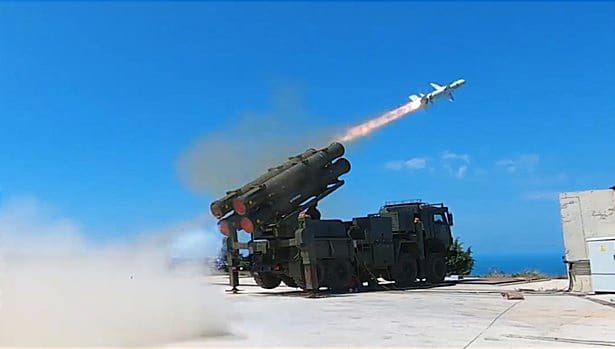Turkey Tests Coastal Defense Version of ATMACA Anti-Ship Missile For The First Time
Turkish missile manufacturer ROKETSAN has advanced its work on various versions of the ATMACA missile. With testing of the latest, a coastal defense variant, taking place on 2 July. The shore launched version of the ATMACA was mounted on a wheeled launch vehicle for the initial test. The Turkish Ministry of Defense’s social media account posted footage of the test fire in the Black Sea. The ATMACA Coastal Defense System, which was tested for the first time, was reported to have hit the target located at sea, according to the Ministry.
In the footage released by the Turkish Ministry of Defense, it can be seen that the launch system consists of four ATMACA missiles that are mounted atop a KamAZ 88 vehicle made in Russia. It was also revealed that the ATMACA missile used in the test had an IIR (Infrared Imaging Seeker) head rather than the RF head seen on the standard version. Making it the first test-firing of Turkey’s first domestic IIR guided anti-ship missile.

In order to meet the domestic anti-ship missile needs of the Turkish Naval Forces Command and gradually replace the US-made Harpoon anti-ship missiles in their inventory, Roketsan began work on the ATMACA anti-ship missile in 2009. The company completed its maiden flying test in 2016, having begun design studies in September 2012. On November 2, 2018, the Presidency of Defense Industries and Roketsan signed an agreement for the serial production of ATMACA missiles. In November 2019, the ATMACA missile was fired for the first time from the MİLGEM TCG KINALIADA (F-514) Corvette. During this test-fire, ATMACA successfully hit a fixed target on the water’s surface.

On June 18, 2021, during a different test, the ATMACA Missile was fired from the KINALIADA Corvette and successfully hit a real ship target for the first time. ATMACA was ready for mass production and delivered to the Turkish Naval Forces Command in November 2021 after more than 20 firing tests and product qualification tests were successfully completed.
During that time, the company also worked on various configurations of the ATMACA, Turkey’s first anti-ship missile. In this context, Roketsan began work on a ground-based version of the ATMACA Missile. On August 18, 2021, during the 15th International Defense Industry Fair (IDEF’21), the contract for the development of Kara (Ground) ATMACA, which was showcased for the first time within the scope of IDEF21, was signed between the Presidency of Defense Industries and Roketsan. The company is also developing an ATMACA variant that can be launched from submarines.

According to the information provided by Roketsan, ATMACA is a high-precision anti-ship missile that was developed to meet operational requirements in surface warfare operations and can be deployed on fast moving boats, frigates, and corvettes. The ATMACA missile is super sea skimming, resistant to countermeasures, equipped with target update, retargeting, and mission abort capabilities, a sophisticated mission planning system (3D routing), and effective against both stationary and moving anti-surface warfare (ASuW) targets. It is also weather-proof and suitable for all types of missions. ATMACA can locate its target utilizing its active radar seeker with high accuracy thanks to its GPS, INSYS, barometric altimeter, and radar altimeter capabilities. ATMACA is able to threaten targets outside of the line of sight thanks to its 220+ km range, 88kg TNT equivalent high explosive blast fragmentation warhead, and datalink capability. Target update, re-attack, and mission abort features are also made possible by the data link capabilities of ATMACA.

